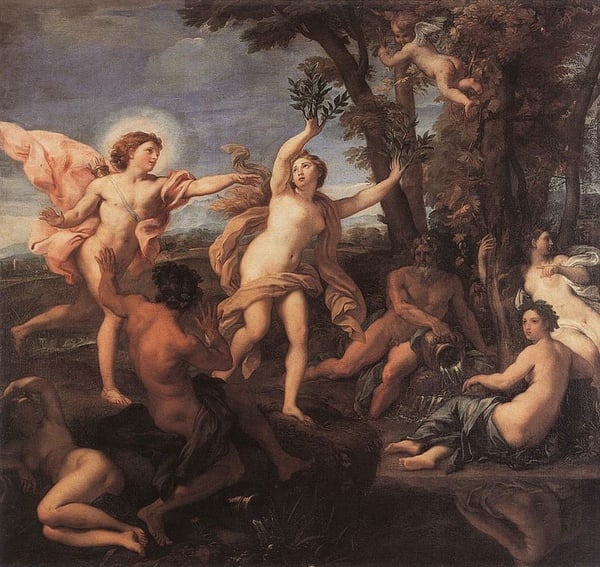
Non havea Febo ancora
recato al mondo il dì
ch’una donzella fuora
del proprio albergo uscì.
Sul pallidetto volto
scorgease il suo dolor,
spesso gli venia sciolto
un gran sospir dal cor.
Sì calpestando fiori,
errava hor qua, hor là,
i suoi perduti amori
così piangendo va:
“Amor,” dicea, il ciel
mirando il piè fermò
“dove, dov’è la fé
che ‘l traditor giurò?
Fa che ritorni il mio
amor com’ei pur fu,
o tu m’ancidi, ch’io
non mi tormenti più.”
Miserella, ah più no,
tanto gel soffrir non può.
“Non vo’ più che i sospiri
se non lontan da me,
no, no, che i suoi martiri
più non dirammi, affé!
Perché di lui mi struggo
tutt’orgoglioso sta,
che sì, che sì se ‘l fuggo
ancor mi pregherà?
Se ciglio ha più sereno
colei che ‘l mio non è,
già non rinchiude in seno
Amor si bella fé.
Né mai si dolci baci
da quella bocca havrai,
né più soavi; ah, taci,
taci, che troppo il sai.”
Sì tra sdegnosi pianti
spargea le voci al ciel;
così ne’ cori amanti
mesce Amor fiamma e gel.
Read an English translation here
—Ottavio Rinuccini, Lamento della ninfa (1614?)
Listen to Claudio Monteverdi’s setting of the Rinuccini canzonetta in L’ottavo libro de madrigali: Madrigali amorosi altri canti di Marte (1638), the solo is sung by Emma Kirkby:
Monteverdi’s eighth book of madrigals, published in 1638, represent, in many ways, the culmination of this art form. The dramatic expressiveness of the genre is pushed to its outermost limits. Moreover, we see the emergence of a cycle as madrigals composed over a long period are skillfully strung together creating a magnificent tableau. Monteverdi attaches the name “madrigals of war and love” to the work, but there is a sense of progression to it. It owes something to the intermedio tradition of the Renaissance, but it moves in the direction of the early Baroque opera. The war-like madrigals are composed in a style that conveys great agitation and pumping adrenalin. Blows fall, heroes triumph, but they also make fatal mistakes. Monteverdi develops new techniques to convey this through the medium of the human voice, especially the rapid-fire repetitions of the stil concitato. But for pure theatricality and for dexterity that foreshadows the grand operatic tradition, nothing competes with the Nymph’s Lament found in the second part of the book. War, devastation, death are quickly followed by pity, expressions of loss and lamentation. The turning of the wheel of human emotion proceeds in a smooth glide. And while Monteverdi’s initial madrigals in the series aim to get the blood pumping and to build apprehension, the second group tug relentlessly at the heartstrings. The lament is certainly one of Monteverdi’s absolute masterpieces, its tonalities are rich and dynamic, and it marks a breakthrough for the early Baroque style. The truly operatic soprano solo is juxtaposed against a male trio, and all of this is built over a continuous, hypnotic four-note ground bass (similar to the technique used in many of the duets in L’Incoronazione di Poppea, but here to better effect). In Monteverdi’s instructions, the soprano is given license to vent passionate expression (a tempo dell’affetto dell’animo e non a quello della mano, he writes), while the trio adhere to a rigorous tempo. The effect is like nothing else in the madrigal literature, and indeed, Monteverdi is breaking out of it—opera is being born.
This performance of the lament, by Emma Kirkby, is probably the best now available. It takes several listenings to appreciate Kirkby’s brilliant nuances.


